Black Fungus Risks and COVID-19
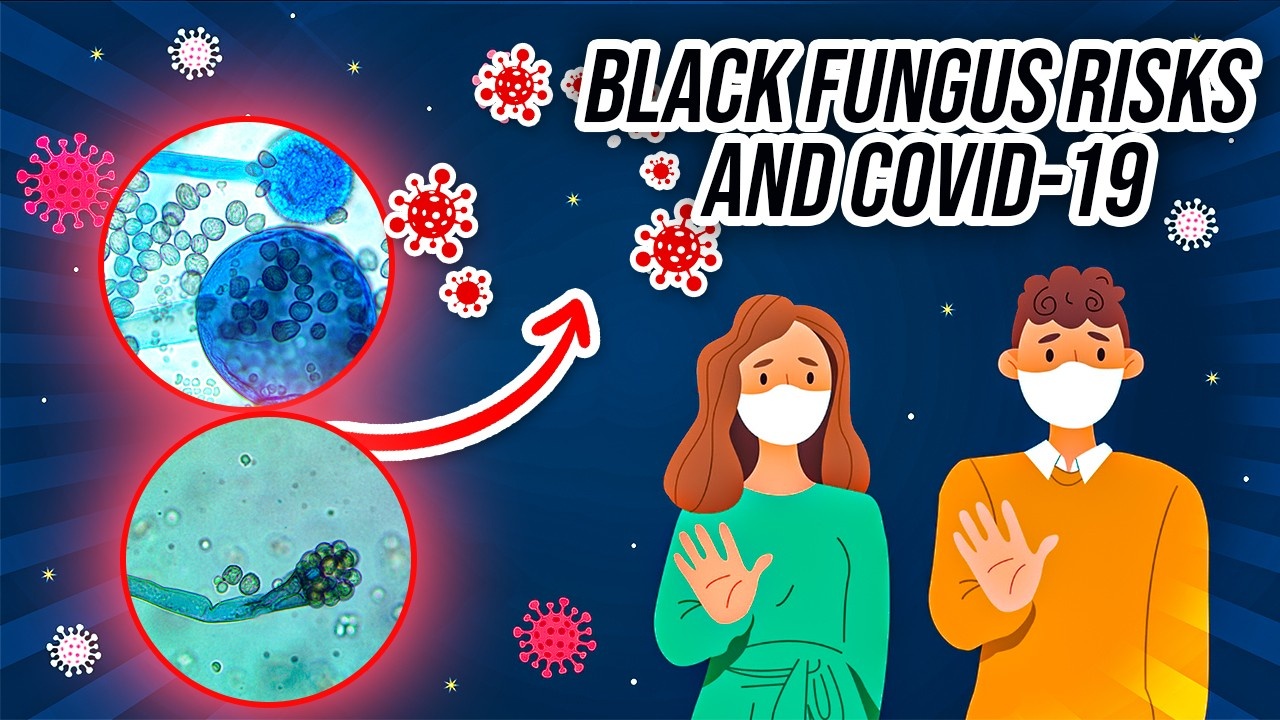
Hey there. My name's Dr. Cameron Jones and welcome to The Mould Show. This week I want to bring to you the key points from a really important recent publication, which just came out in the literature that is focusing on another class of black moulds. Yes, that's right. We're going to be talking about black mould and you might know about black moulds from the infamous Stachybotrys, which has been linked to pulmonary hemorrhage and is very commonly associated with water-damaged and other sick buildings. But there are another class of black moulds and black yeast-like fungi, and we're going to be talking about these today because especially in this era of COVID-19, the COVID pandemic. A publication's just come out, showing that people who recover from COVID-19 are particularly susceptible to post COVID-19 infection with black moulds. And so I want to review what this publication says today and how you can take advantage of this information and how you can potentially make sure that you at least know about this as an infection risk especially if you are recovering from COVID-19 or know anyone who is.
So what are we going to be talking about today? Well, we're going to be talking about black fungus risks and COVID-19. And to set the stage, I need to explain to you what we are talking about because as I said, most of you probably are thinking about Stachybotrys chartarum, which is, as I said, the infamous black mould that no one wants inside their home. But there is another class of black moulds and the publication that we're going to be talking about today talks about these black fungi. And they create an illness called mucormycosis, and I've pulled up two example micrographs from my fungal collection in my lab. These are pure strains of black moulds, which I have in the fridge and I cultivate from time to time. And when I do this, I can show you exactly what this looks like under the microscope.
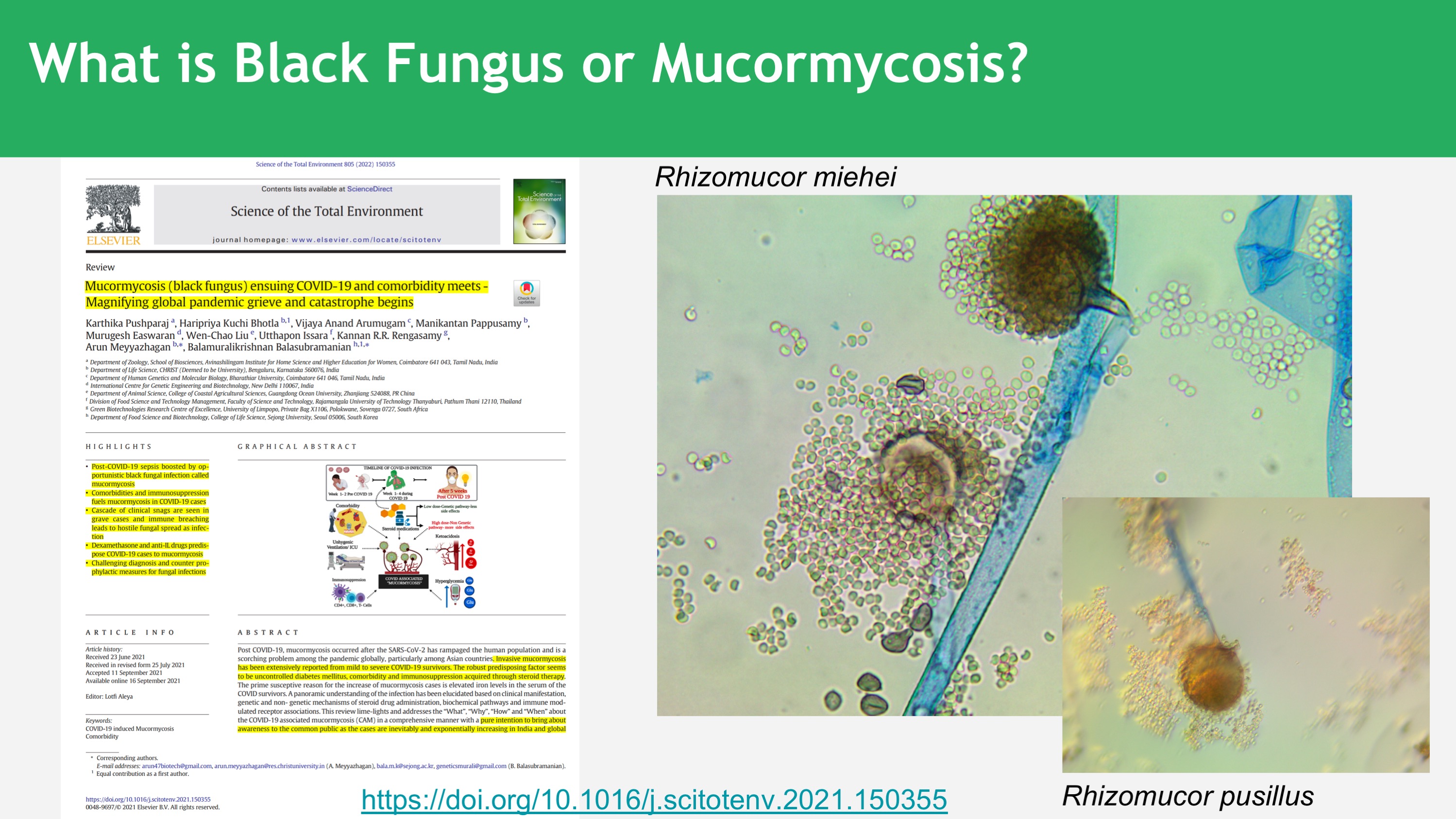
So Rhizomucor miehei and Rhizomucor pusillus are typical examples of black moulds which we need to be aware of. And they cause a range of different infections, mainly because they produce these dark coloured spores. And these dark spores can actually get into your respiratory system, your gastrointestinal system, and cause all sorts of havoc. And we're going to be talking out exactly the range of different infections that they can cause. But I want to take you back because for many of you are probably thinking that, "No, that's not going to happen to me." But black fungi are all around. Now, they're commonly found about the home in the dishwasher seals or the washing machine seals. And there's been a lot of elegant research talking about fungi about the home and these black moulds and yeasts are particularly common. And it's not just in the home environment, in a whole host of other places as well. Many years ago, when I went to Nauru to do an indoor air quality and mould inspection on the refugee tent city camps, I found toxic black moulds and yeasts of this particular type, absolutely everywhere.
So it's really important to be aware of this. And in fact, you can find them everywhere. Here is a Petri plate from an inspection that I did just last week in somebody's home. And you can see that what I've done with the Petri plate is that... I want you to look around the margins of the Petri plate. And so you are getting Aspergillus niger, and particularly, Rhizopus spores and Mucor on the Petri plate itself. Now, this was pressed onto the mantlepiece in this home, which is undergoing mould remediation for water damage. But typical types of genera of black fungi include Rhizopus and Mucor. And these are referred to as the Order Mucorales and as I said, they cause mucormycosis, which is the technical name for the infection that they cause. So we need to be very well aware of this because it is incredibly common and I'm going in a focus most of the attention for the rest of this live stream on why this is so. And to do that, I need to review the three stages of infection with COVID.
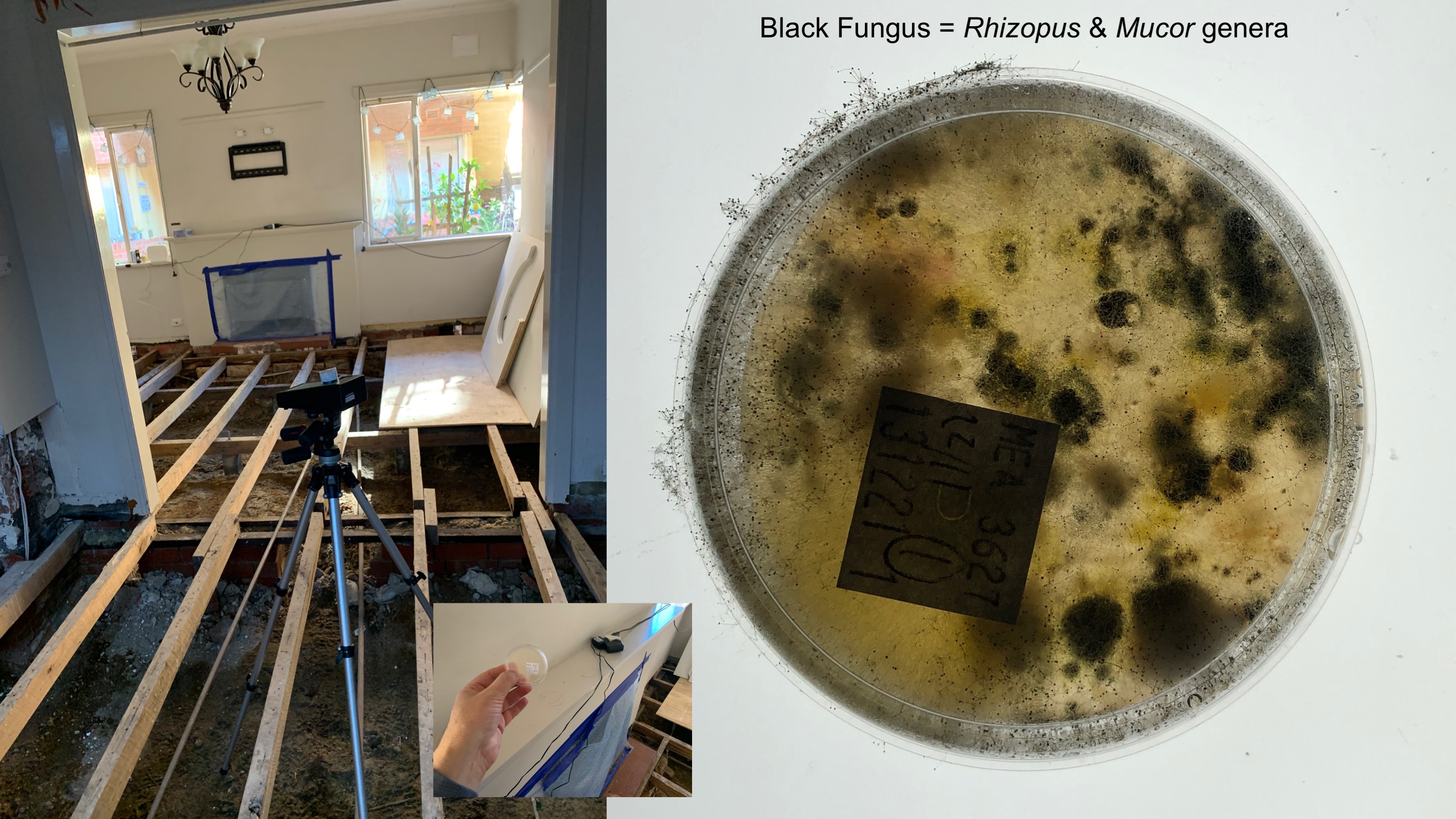
So obviously, week one and two is the pre-COVID-19 phase. And as the illness progresses, you can potentially be offered steroid or medication. And why would that happen in a clinical context? Well, within the clinical context, people who are immunocompromised already, that is those people with high blood pressure or importantly, things like diabetes, are particularly susceptible to the adverse effects of requiring steroidal medication. And that's what the publication that we're focusing attention on today is talking about. So after the acute infection, approximately a month after initial infection with the SARS-COVID-2 virus, there is this post-five-week period or the post-COVID-19 phase. Now, if you've recovered, you would think, "Fantastic. I can get back into life." But for those people who are immunocompromised, you need to be especially mindful that this post-COVID-19 period makes you very susceptible to these COVID-associated black fungal infections.
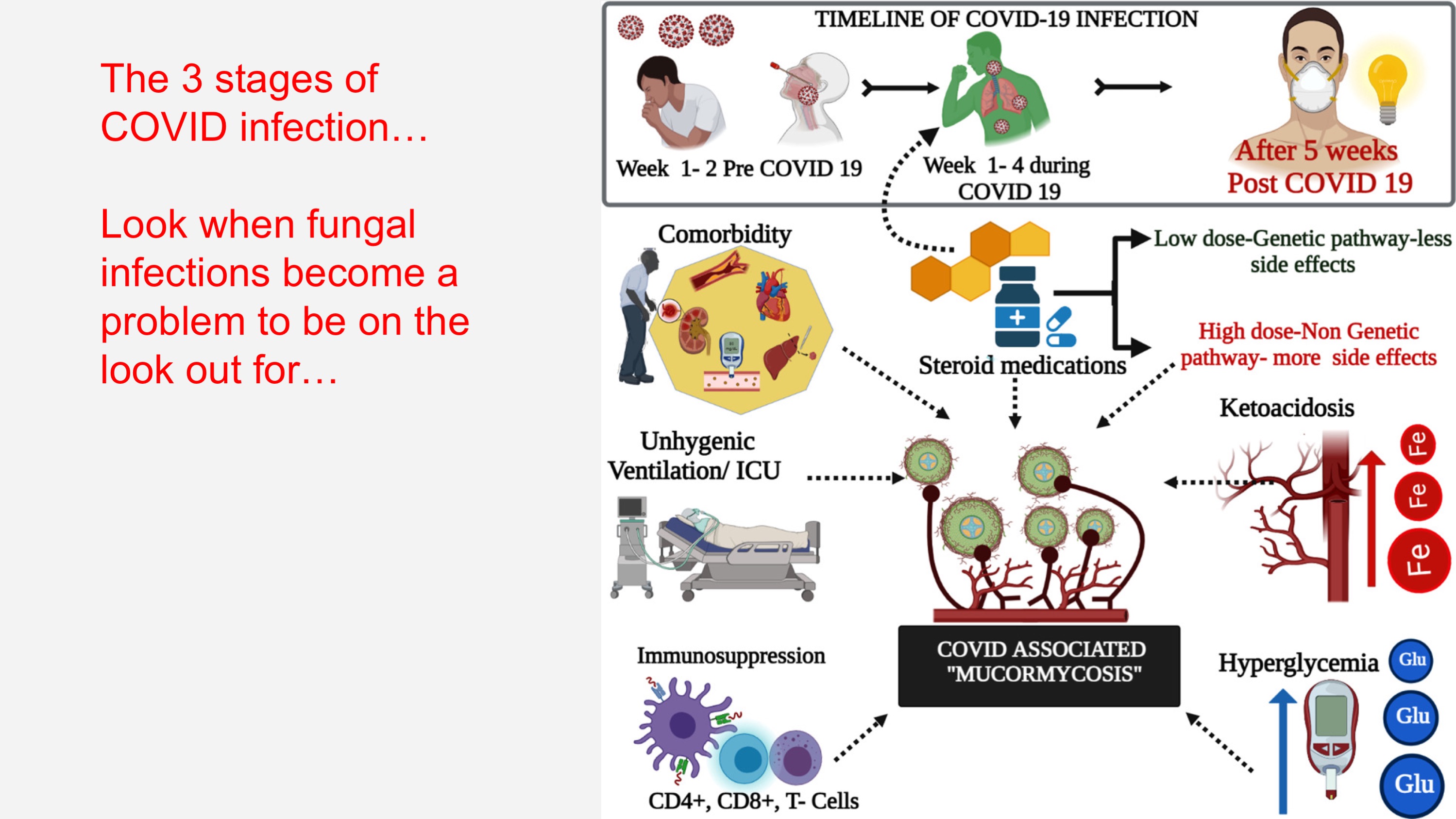
And I want to explain why, because these fungi can use iron and when individuals are given steroids, some of these increase the levels of iron in your body. So therefore the black fungi can exploit that and you can end up with a post-COVID-19 infection making you very sick in a worst-case scenario. And so if we go back and I review some of the next information that I want to bring to your attention, who is most likely to be susceptible to these black yeast-like infections? Well, those individuals who have diabetes or are immunosuppressed and essentially anyone who is recovering from COVID-19 is more than likely immunosuppressed, but also people who have asthma or COPD or undergoing some form of cancer therapy may also be immunosuppressed and age is immunosuppressive in its own right.
And so we need to be mindful of the fact that immunosuppression can affect anyone and that therefore these black moulds, you should be aware of them because it can affect people even after they have overcome the primary illness influenza-like illness-like SARS-COVID-2. Infection with SARS-COVID-2, I should say. So where did these spores come from? Well, as you saw in the photograph from the apartment that I showed you with the Petri plate from the mantlepiece, these spores can be inhaled, they're in the air everywhere, they're on surfaces, and they can be picked up on the skin and they can get inside your body through cuts and abrasions, or even being ingested. And the primary clinical therapy in use worldwide to treat SARS-COVID-2 is steroid therapy because it dampens down the inflammatory reaction.
And the only problem is that in doing this, it increases the levels of iron in the blood. And then black fungi can take advantage of this and use this to grow on. And so really this is an absolute headache, it's something that we don't want, and I need to bring this to your attention. And so what did the scientists say? Well, they said that dexamethasone is again, one of the most common treatments in the clinic, in the hospital that patients will be offered and the BBC have done a lovely infographic showing the benefit of dexamethasone because I don't want you to think that this is not a valid treatment modality. There's good literature to support its use. And you can see, even from the infographic from the BBC, that for a cost of approximately 10 Australian dollars per day, 12 patients out of every hundred who need ventilator support are saved due to the ability of dexamethasone steroidal treatment to reduce inflammation.
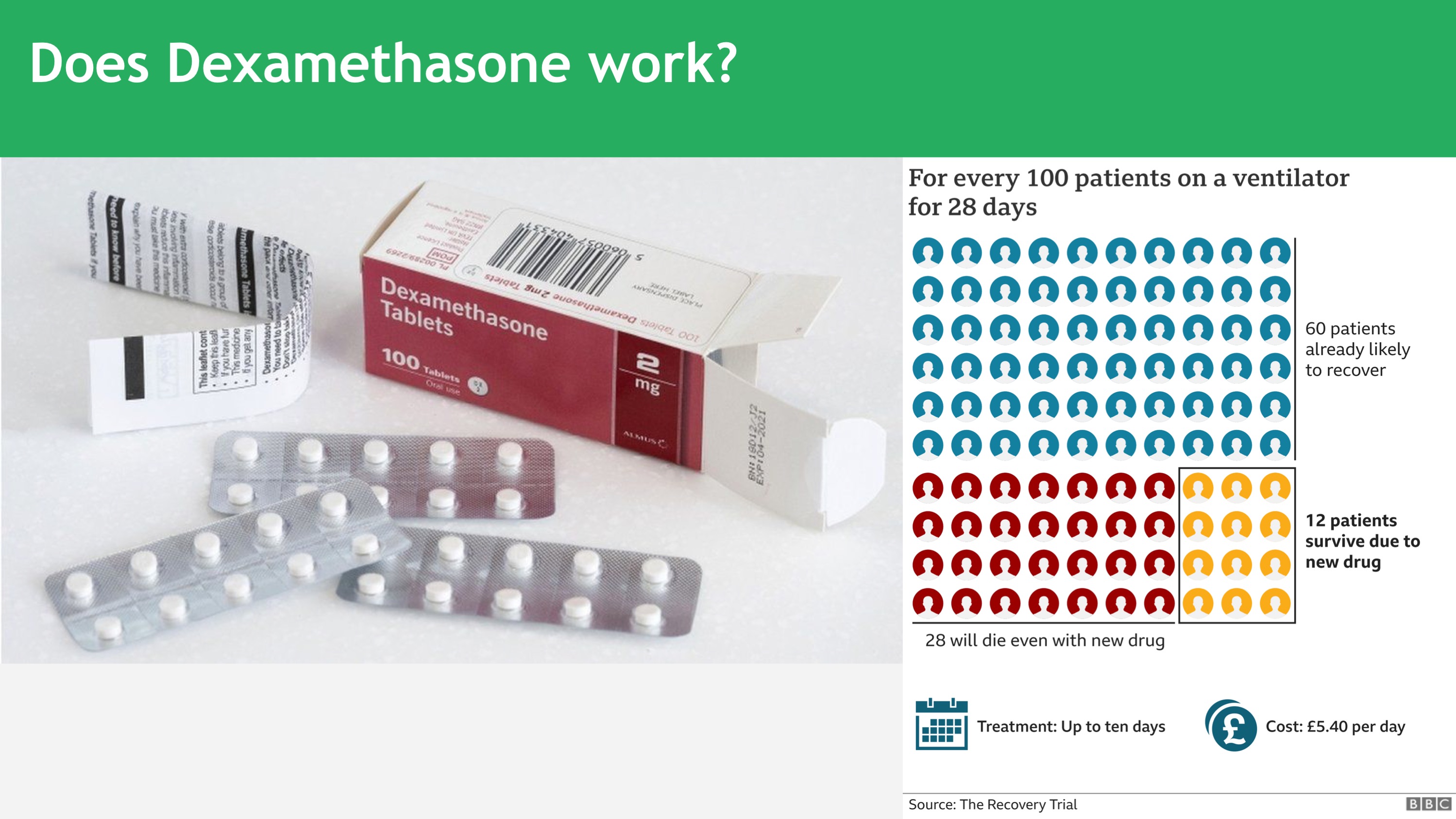
But the big issue here is that just because you reduce inflammation, doesn't necessarily mean that you're out of the woods. And again, I would encourage everyone to download this publication and become aware of black yeast-like fungi, particularly Rhizopus and Mucor and Rhizomucor and a range of other very beautiful fungi, which I see regularly under the microscope and in Petri plate culture. But I really want to focus on the fact that there is an increasing range of publications coming out in the literature, talking about the serious complications after initial COVID-19 infection caused by fungi, and we cannot underestimate the severity of this. And again, if I look at why this is a problem, the authors discuss something called the Janus-faced issue around dexamethasone. And this means that Janus-faced means that there are two contrasting properties. So on the one hand, steroidal therapy is really beneficial because it reduces inflammation, but at the same time, it creates immunosuppression.

And so the author's stress that it might be a much better idea if clinicians would use aspirin or ibuprofen, which doesn't have this serious immunosuppression effect or increases the levels of iron in the body. And we cannot underestimate the levels of iron in the body being used as a food source by these black moulds. Now, if I just draw your attention to one of the figures in the publication that these authors put out a couple of weeks ago, they were talking about the two phases essentially, and consider the first month being the acute COVID-19 infection period. And then the five-week mark, which is after or called the post COVID period. Now it is the post COVID period when people are most susceptible to infection with these fungi.
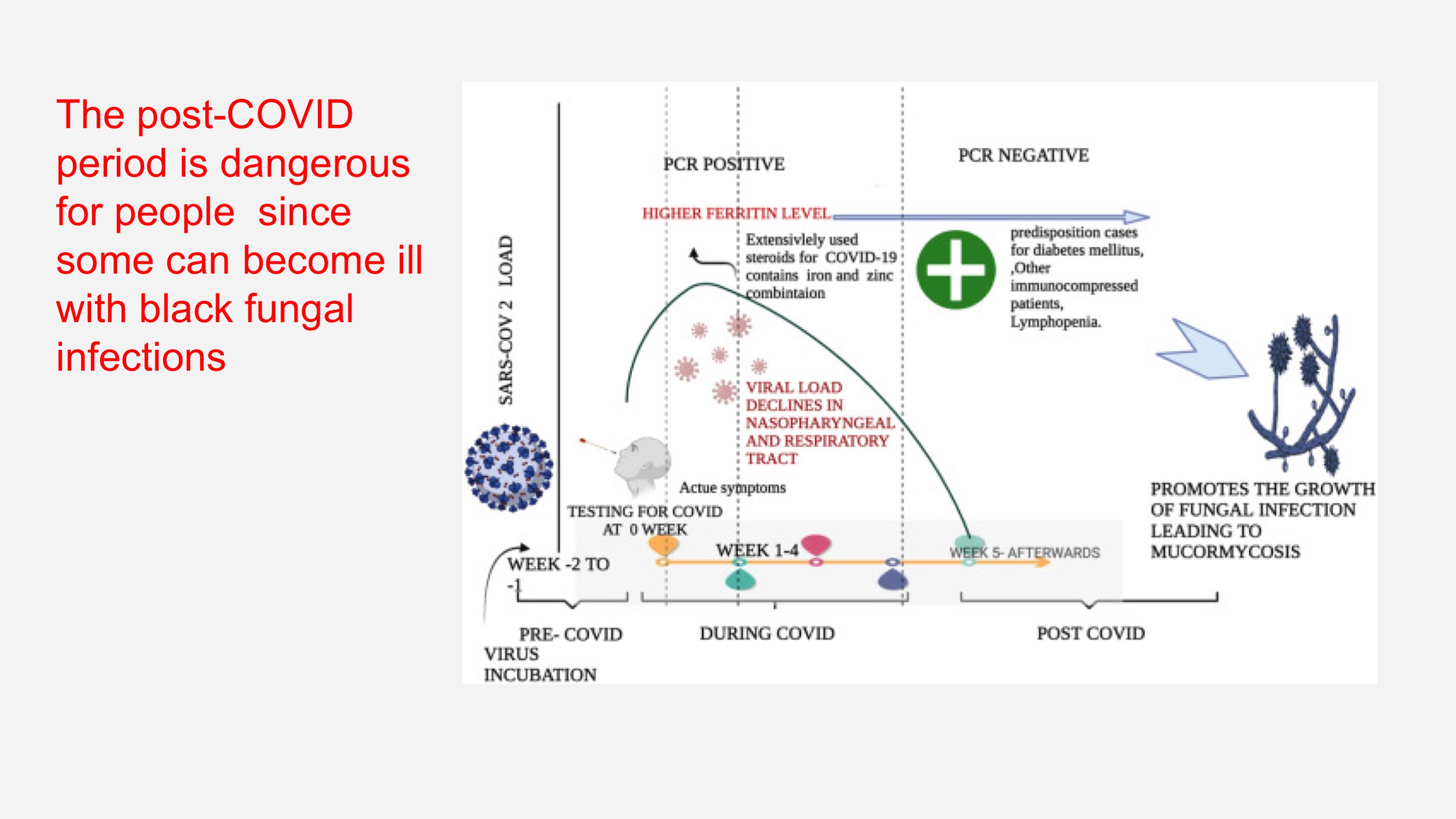
And I cannot underestimate where you can actually get these. So we are going to go through some of the common ways that black fungus of the type Rhizopus and Mucor can get into the body.
Now, again, I reiterate that you need to have a comorbidity such as diabetes or hypertension already, and you also need to be aware of that in your own life or in those of your friends and family who might end up getting COVID-19. So the fungus gets into your body and depending on where the introduction point is, that's most likely where the site of the infection will be most acute. And depending on where in the body it causes the infection, that determines the outcome of the severity of the infection. And make no mistake, these are not like athlete's foot or jock itch or that type of thing. Black mould infections are incredibly serious and have a very high mortality. Hence, why there is so much research interest in black fungi at this point in time and why I want to bring this to your attention?

Because being aware of this may potentially save your life, or at least reduce infection post-infection severity and complications from other secondary infections after COVID-19. So it can easily get into your eyes, through your sinus by inhaling spore material from the environment. And if it does pass the blood-brain barrier and gets into the brain, really, this is an extraordinarily serious infection. And as I said, has a very high mortality rate. It can affect your gastrointestinal system and of course can get in through your bloodstream through cuts and abrasions in the skin. So make no mistake, it is a very serious problem. Now, the final slide that I want to bring to your attention is the treatments. And what did the authors conclude? Well, they really made four main points as their conclusions. Firstly, you must be aware of whether or not you are at risk. Are you immunocompromised? Do you have diabetes? If you do have diabetes type 1 and type 2, you need to be aware that these types of black moulds can be a real serious health risk.
The authors stress the importance of improving the microbiome or the mycobiome, which is all the intestinal microflora that contribute to a healthy immune system. You need to improve the overall hygiene around the home and office, and that there are a range of natural methods to do this. You don't always have to reach for a chemical to kill mould. You just need to improve overall hygiene. And some of the natural methods to improve hygiene include the use of apple cider vinegar, tea tree oil, turmeric, aloe vera, garlic, baking soda, hydrogen peroxide, and consuming ascorbic acid or vitamin C rich foods to improve your overall immunity. These are some of the key takeaways from this publication.
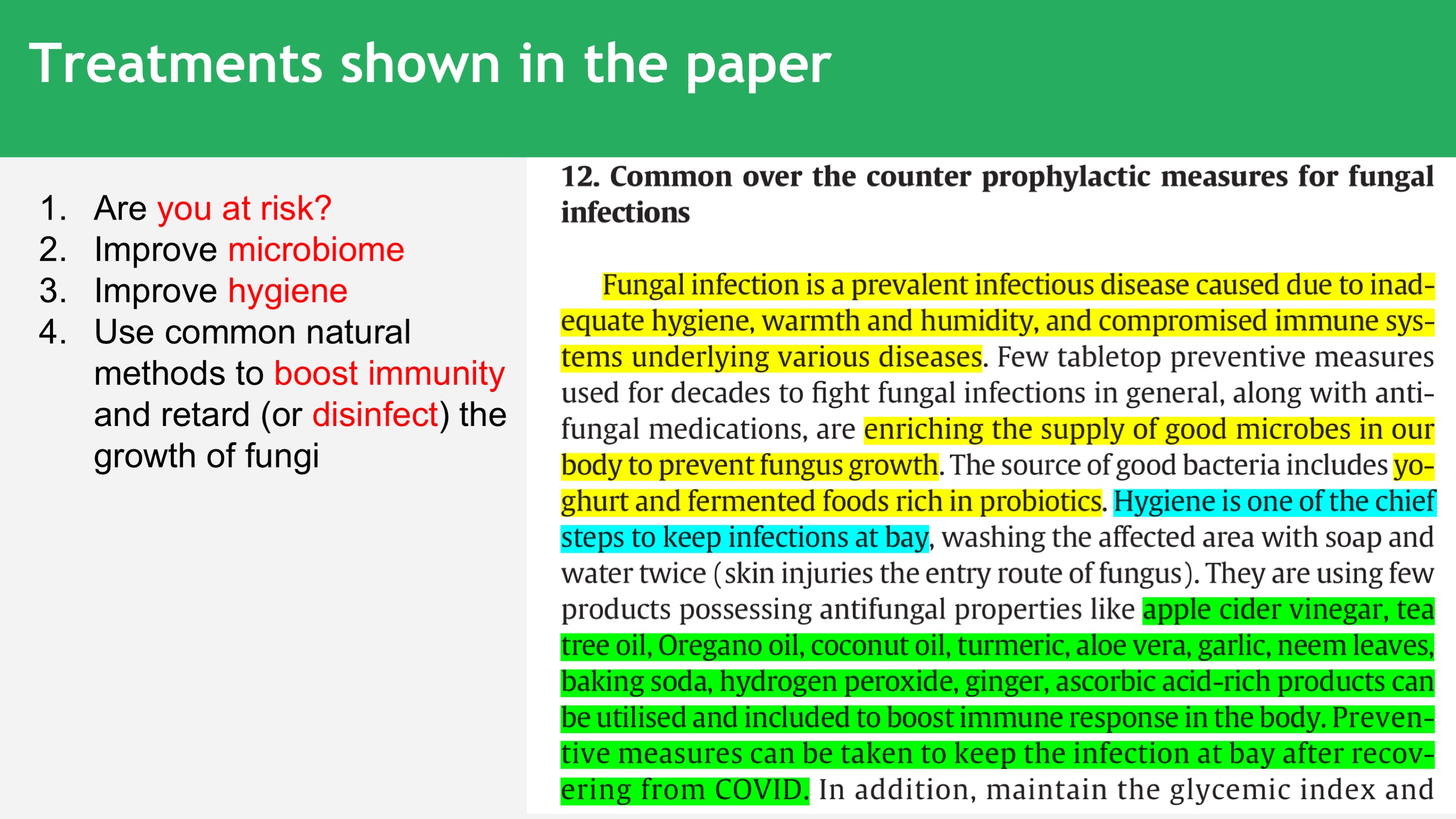
Now, as I said, all of the links to these publications and more are going to be in the show notes. These podcasts and videos go straight to YouTube, as well as a range of different social media websites.
I'm always available to contact about this because you cannot underestimate the fact that black moulds of all different types, as well as a range of different environmental fungi, can cause serious illnesses. It's not just a runny nose or the sniffles or allergy type impacts that fungi have, black moulds as I said, are increasingly being researched and linked with very serious clinical outcomes around COVID-19. And COVID-19 is of course the most significant influenza-like illness that all of us are focusing attention on, but there are a whole host of other influenza-like illnesses, which also predispose people to immunocompromise. And so steroidal substances and drugs are often prescribed for people to overcome their respiratory illnesses and you mustn't underestimate therefore the impact of black fungi as a potential secondary infection source for those individuals. Now, I want to talk about the fact that this podcast is available on iTunes and also on themouldshow.com website.
So you can download these episodes. We're nearly up to episode 100 (ok, technically 93). So I'm enjoying doing these, certainly share these podcasts with your friends and family or anyone who is interested in the impact that mould has on our health and wellbeing. And I should also say as well that I have a range of free surveys and ebook for free download on my other companion website, which will allow you to some extent determine whether or not your home or office poses a health risk from environmental fungi. And the ebook is going to go into some detail about the background to moulds in general and how they affect your health and wellbeing. In any case, my name's Dr Cameron Jones, leave a comment, share this video. And if you like it, or have a question, reach out to me, I'll be happy to make every effort to answer your question. In any case, stay safe, be well, and I shall see you next week. Bye for now.
Watch the Livestream:
REFERENCES:
Pushparaj K, Kuchi Bhotla H, Arumugam VA, Pappusamy M, Easwaran M, Liu WC, Issara U, Rengasamy KRR, Meyyazhagan A, Balasubramanian B. Mucormycosis (black fungus) ensuing COVID-19 and comorbidity meets - Magnifying global pandemic grieve and catastrophe begins. Sci Total Environ. 2022 Jan 20;805:150355. doi: 10.1016/j.scitotenv.2021.150355. Epub 2021 Sep 16. PMID: 34818767; PMCID: PMC8443313. https://doi.org/10.1016/j.scitotenv.2021.150355
Lukács, G., Papp, T., Nyilasi, I., Nagy, E., & Vágvölgyi, C. (2004). Differentiation of Rhizomucor species on the basis of their different sensitivities to lovastatin. Journal of clinical microbiology, 42(11), 5400–5402. https://doi.org/10.1128/JCM.42.11.5400-5402.2004
Zupančič, J., Novak Babič, M., Zalar, P., & Gunde-Cimerman, N. (2016). The Black Yeast Exophiala dermatitidis and Other Selected Opportunistic Human Fungal Pathogens Spread from Dishwashers to Kitchens. PloS one, 11(2), e0148166. https://doi.org/10.1371/journal.pone.0148166.
Air Quality and Mould Inspection Report: Nauru Regional Processing Centre.
https://www.homeaffairs.gov.au/foi/files/2020/fa-191000441-document-released.PDF

